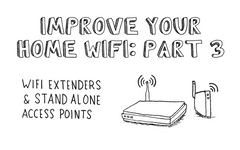Payment methods accepted

The Fiber Optic vs Copper UTP Enigma
Written by Mark Hahn, Telecommunications Project Manager
Confused between fiber optic versus copper cabling? The costs, the strengths, the weaknesses of each? If you are, trust me, you have plenty of company! It can be confusing, until now. The following article and accompanying chart will hopefully clear up any confusion and send you on your way to make an educated decision when it comes to fiber optic versus copper cabling.
A good start is to keep this in mind, the three main differences between the two technologies are their speed, bandwidth and the distance they can carry information. Fiber optic cable gets the nod for all three. I’m sure you’re wondering, what about cost? This is a valid question and depends heavily on the application. I’ve included a chart below to show how close the cost and performance can be between some of the aspects of these two technologies.
Fiber Optics: Light Years Ahead
First, the advantages of fiber optic cables include being comprised of thin bundles of optical fibers, most commonly referred to as strands, and can be manufactured using optically pure glass or plastic.
The cables can be comprised of anywhere from two strands to hundreds. These strands can be as narrow as a human hair and are used to transmit pulses of infrared laser light that in return carry data, voice, video and many other forms of information.
You can read more in the article, Top 5 Advantages of Fiber Optic Cable.
What is UTP Copper?
A UTP (Unshielded Twisted Pair) cable uses eight solid copper conductors with a protective color-coded covering. They are then grouped into four pairs. Information is transmitted through them by electrical impulses / wavelengths.
Each pair is then twisted a certain number of times per inch to minimize crosstalk and electromagnetic interference. This twisting of wires also plays a large part in the speed the data is able to be transmitted. The diameter of the copper conductors, the materials and the manufacturing processes also play a major part in the various levels of performance available for use in your network.
Twisted-pair cables transmit and receive information through electrical current and the advantages of copper cables have become the foundation of telecommunications and data transmission today because of their design simplicity, ease of use, and robust performance.
There are many configurations of fiber optic and UTP copper cabling that are available to fit the many various applications for each. For this article we will limit the listing of details and technicalities of each for the sake of a greater ease of understanding.
The Basic Comparisons
The primary difference between copper cables and fiber optic cables is bandwidth. It is the elemental technologies that cause the gap in the bandwidth between fiber and copper. Ethernet cables use copper wires that are significantly greater in diameter, have greater attenuation, and are subject to both outside and internal interference.
The differences in bandwidth is because a copper cable uses electrons (an electrical signal) for data transmission while a fiber optic cable uses photons (light). Light pulses are faster than electrical pulses, so in return, fiber can transmit more bits of data per second and offer higher bandwidth over copper.
Bandwidth: The Heart of the Matter
Bandwidth is the maximum rate data can be transferred over a network or internet connection in a certain amount of time. It is typically measured in gigabits per second (Gbps) or megabytes per second (Mbps).
Bandwidth is used to characterize network speeds. It does not measure how fast the bits of data move from one location to another. Since these packets of data travel over electronic or fiber optic cables, the speed of each bit transferred is trivial. Instead, bandwidth is measured by how much data can flow through a specific connection at one time.
The classic analogy of a highway is used to help visualize bandwidth. Say an interstate was designed to accommodate a set number of cars moving from point A to point B during any given hour. Adding more lanes to the highway would be one way of increasing bandwidth, so that more cars can pass through in a given amount of time
Fiber vs Copper Cabling
The chart below helps illustrate the fact that some of the differences between copper cable and fiber optic cables can be very close to each other. In other words, in the proper context, they can be comparable. It should not be used for design purposes and only as a guide to better understand how comparable these two technologies have become over the years in their performance, application, costs, termination techniques, etc. Lastly, Category-6a closes this gap to a much greater extent due to its 10-Gbps capabilities so I have dedicated a segment below solely to explain it.

The Main Advantages of Fiber over Copper (UTP)
Greater Bandwidth & Faster Speed: Fiber optic cable can support extremely high bandwidth and greater speeds. The sheer amount of information that can be transmitted per element of optical fiber cable is its most significant advantage.
Cheap: Miles of fiber optic cable can be made much cheaper than equivalent lengths of UTP copper wire.
Distance: Easily one of the greatest advantages over UTP copper is the distance that fiber optics can provide for data transmissions.
Smaller Diameter & Lighter Weight: Fiber Optic cable is much thinner and can be manufactured to smaller diameters than copper wire. The fiber strands and the cable, as a whole, are a much smaller size and lighter weight than compared to copper cable and offer a better fit for tight places where space is a concern.
Less signal degradation: The loss of signal in a fiber optic cable is much less than that in copper wire.
Light signals: Unlike the electrical signals that are transmitted in copper wires, light signals from one fiber do not interfere with the other fibers within the same cable.
The Main Advantages of Copper over Fiber
Specialized Technology: Fiber optics are considered a unique technology in the cabling world and in return requires specialized training, much more expensive tools, more specific installation techniques and in return higher labor and material costs to implement.
The POE advantage: UTP certainly has the advantage over fiber optics when it comes to Power Over Ethernet due to the inability of the fiber to carry an electrical signal.
Please Note: There are fiber optic converters available that will convert a light signal to an electrical signal but they can be costly.
Simply reverse the advantages in the above segment “Main Advantages of Fiber Optics over Copper” and the list of the disadvantages of Copper will grow, BUT, please read on and you will soon see the light at the end of the UTP tunnel.
There's a New Kid in Town - Cat6A
A brief description of the standardizing of Cat6A that made it the first true copper UTP to support 10-G transmissions at 100-meters:
We need bandwidth-intensive applications at a speed of 100Mb/s to 1000Mb/s when it comes to transferring large data files; particularly those that contain high resolution graphics and videos. If your cabling infrastructure uses Cat5e or Cat6 related series of cables, these transactions can create a great load on them.
Simply stated, the major advantage of Cat6A cables is the high-speed data transfer at 10Gbps. Although, it is important to remember that they are still limited to the 100-meter standard distance. I’d like to also point out that a Cat6A option for your network’s cabling infrastructure can be a lot more costly compared to the other solutions available.
Some of the factors involved in the substantial cost are due to the unique build of the cable, the special design of the connectors that are required and the additional care and labor involved for the installation. Other than the payoffs I have described, another continuing payoff is that Cat6A, at this point in time, is futureproofing for the next generation of devices, in particular WiFi devices. It must be viewed as an investment and an asset, not a liability.
An Interesting Fact
Cat6 cable will support 10Gbps transmissions but only up to the distance of 164 feet, half of the 328 feet of Cat-6a. In this instance, it would be a great choice for such connectivity solutions throughout small office projects and computer labs.
The standard for Category 6A is ANSI/TIA-568-C.2, defined by the Telecommunications Industry Association (TIA) for enhanced performance standards for twisted pair cable systems. It was defined in 2004. Cat 6A performance is defined for frequencies up to 500 MHz—twice that of Cat 6.
And the Winner is Both!
To sum up, fiber to the desktop, or endpoint, has not been fully adopted as a practical solution. This is mainly due to the associated cost of the equipment required. So, at this point in our fiber optic vs copper comparison it should be apparent that fiber optic cable and copper UTP cable have their own distinct advantages and are by all means not practically interchangeable. They are best used in partnership with each other in order to provide the best solution for your structured cabling solution.
trueCABLE presents the information on our website, including the “Cable Academy” blog and live chat support, as a service to our customers and other visitors to our website subject to our website terms and conditions. While the information on this website is about data networking and electrical issues, it is not professional advice and any reliance on such material is at your own risk.

































